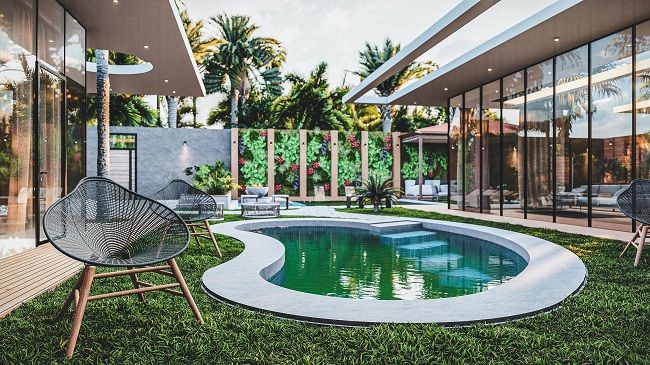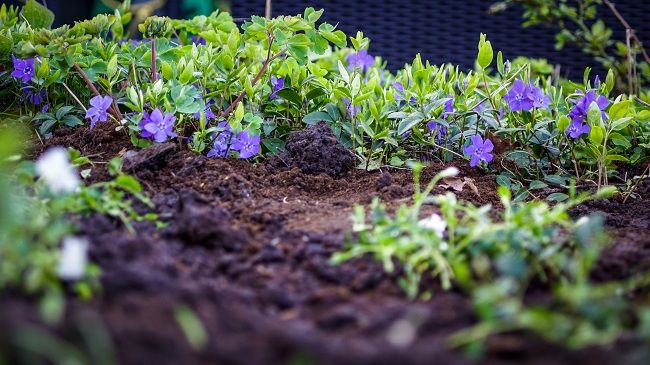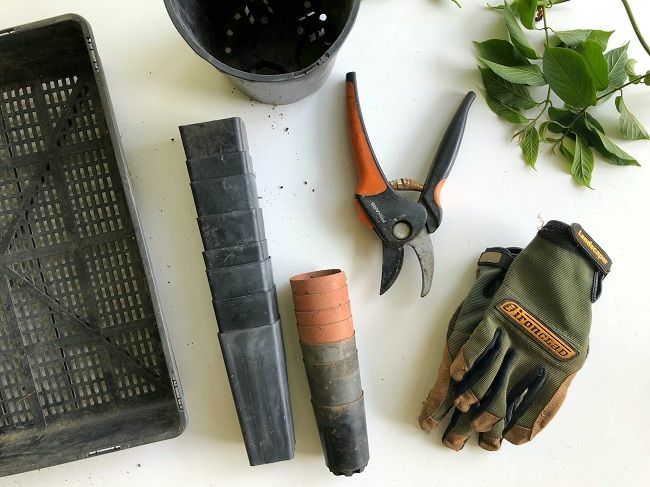A garden is an outdoor area where you grow plants, flowers, and sometimes even vegetables and fruits. Gardens can be found in various locations such as residential areas, public parks, commercial spaces, and even on rooftops.
The primary purpose of a garden is to provide a beautiful and peaceful environment where people can relax, unwind and connect with nature. Additionally, gardens can also be used for educational purposes, such as teaching children about the environment, biology, and agriculture.
Gardening is also considered a popular hobby for many people, allowing them to express their creativity and passion for plants and nature. Different types of gardens exist, such as formal gardens, cottage gardens, vegetable gardens, and many more, each with its own unique style and purpose.
(You may love these: DIY: How to Style Up Backyard Easily In 4 Ways)
There are some tips on how to style a garden that you can consider before putting everything in the garden.
How to Style a Backyard Garden
How to Style a Garden

Styling a garden involves selecting the right plants, creating a layout, and adding decorative elements to enhance the visual appeal of the space. Here are some tips on how to style a garden:
- Choose a style: Decide on the overall style of the garden, such as a cottage garden, formal garden, or modern garden. This will help guide your plant selection and layout.
- Consider the location and climate: Choose plants that are suitable for the climate and the soil in your garden. Make sure to select plants that can thrive in the amount of sunlight and water available in the area.
- Create a focal point: Add a feature to draw the eye, such as a fountain, statue, or stunning plant. This will create a central point in the garden and add interest.
- Add layers: Use plants of different heights and textures to create depth and interest. Layering plants also helps to create a sense of harmony and balance in the garden.
- Add decorative elements: Decorative elements such as garden art, lights, and furniture can help to add character and style to the garden. Choose pieces that complement the overall style of the garden.
- Create pathways: Create pathways to guide visitors through the garden and highlight different areas. This can be done using stepping stones, gravel, or bricks.
- Consider maintenance: Choose plants that are easy to maintain and won’t require excessive watering, pruning, or fertilizing. This will ensure that the garden remains healthy and vibrant with minimal effort.
(You may love these: How to Prevent Standing Water in The Backyard | 4 Easy Tips)
Garden Styling Do’s and Dont’s

Here are some do’s and don’ts for maintaining a garden:
Do’s:
- Water your plants regularly: Make sure to water your plants on a regular basis, especially during the hot summer months.
- Fertilize your plants: Use organic fertilizers to provide your plants with essential nutrients and help them grow healthy and strong.
- Prune your plants: Regularly prune your plants to remove dead or diseased branches and promote healthy growth.
- Weed your garden: Remove weeds from your garden to prevent them from stealing nutrients and water from your plants.
- Mulch your garden: Mulching helps to conserve moisture, suppress weed growth, and regulate soil temperature.
- Rotate your crops: Rotate your crops to prevent soil-borne diseases and promote healthy soil.
- Use natural pest control: Use natural pest control methods, such as companion planting, to avoid using harmful chemicals in your garden.
Don’ts:
- Overwater your plants: Overwatering can lead to root rot and other diseases.
- Use too much fertilizer: Over-fertilization can lead to burnt leaves and can be harmful to the environment.
- Prune too much: Pruning too much can harm the plant and reduce its ability to produce flowers or fruit.
- Use harmful pesticides: Avoid using harmful pesticides that can harm beneficial insects and pollinators.
- Neglect your garden: Neglecting your garden can lead to weed growth, disease, and pest problems.
(You may love these: DIY: How to Decorate Patio with Drop Cloths | 4 Easy Steps)
Equipment and Tools Tips

Having the right equipment can make gardening easier and more efficient. Here are some equipment tips for maintaining your garden:
- Hand tools: Invest in good quality hands tools such as a trowel, pruners, and gloves. These tools will help you plant, prune, and weed your garden with ease.
- Watering can or hose: A watering can or hose will help you water your plants and keep them healthy.
- Shovel: A shovel is useful for digging holes and moving soil, mulch, or compost around your garden.
- Wheelbarrow: A wheelbarrow is helpful for transporting heavy items such as soil, compost, and plants around your garden.
- Lawn mower: If you have a lawn, a lawn mower is essential for keeping it trimmed and healthy.
- Garden fork: A garden fork is useful for aerating your soil and removing weeds and debris.
- Pruning saw: A pruning saw is useful for cutting thicker branches and limbs that pruners cannot handle.
- Garden shears: Garden shears are helpful for trimming bushes, hedges, and small branches.
- Garden cart: A garden cart is helpful for transporting large items such as bags of soil and composts around your garden.
- Rake: A rake is useful for leveling soil, removing leaves, and spreading mulch.
- Garden hoe: A garden hoe is helpful for breaking up soil, removing weeds, and shaping beds.
- Garden sprayer: A garden sprayer is useful for applying organic pesticides, fertilizers, and other treatments to your plants.
(You may love these: 10+ Attractive Small Backyard Ideas You Need to Copy Now)
In conclusion, a garden is a beautiful and peaceful outdoor space that provides many benefits, including relaxation, education, and enjoyment. Styling a garden involves selecting the right plants, creating a layout, and adding decorative elements to enhance its visual appeal.
To maintain a healthy and thriving garden, it is important to water and fertilizes your plants regularly, prune and weed your garden, and avoid using harmful pesticides. By following these tips, you can create and maintain a beautiful garden that brings joy and tranquility to your life.